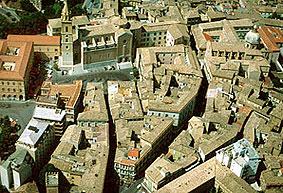


All the structures

Chieti is one of the oldest cities in Italy, even 500 years older than Rome. It is said to have been founded by Achilles, who named it Thetis in honour of his mother. In fact, the hero is depicted riding a prancing horse and holding a spear on the city’s coat of arms.
As evidence of the town’s ancient origins, many homes have a section of the city wall incorporated into their structure. The remains of temples, thermal baths and important works of hydraulic engineering have been found around the Chieti area.
The Chieti province is noted for containing the Majella National Park, an area of about seventy-five thousand hectares. The park is important for its exceptional scenic beauty, which is jealously guarded and protected, but also for its artistic, cultural and historical riches.
The park is inhabited by many species of animals such as otters, wolves, bears and chamois. Within these beautiful surroundings are hermitages, monasteries and even tholoi. Tholos tombs, also known as beehive tombs, are structures from the late Bronze Age as well as Mycenean tombs or funerary monuments from the Middle Bronze Age.
There are various, not too difficult routes for fans of trekking, although the presence of a guide is advised because of the difficulties of orientation.
Chieti is a fortunate town since important coastal and mountain areas are within easy distance, such as the Gran Sasso Park and the Majella Park.
Pineto is a seaside town with important monuments to visit, such as the Parish Church containing works by local artists. The 10 km long Pineto beach is one of the most popular in Abruzzo. The Abruzzo sea and surrounding lands have kept their enchanting natural beauty.
At an altitude of 576 metres, D'Annunzio defined Guardiagrele as "the noble town of stone". Guardiagrele is an ancient village dominated by a Lombard tower, ‘il Torrione’. The village is famous for its handmade wrought iron, ceramics, wood, copper, lace… and even the inlaid stone and gold work.